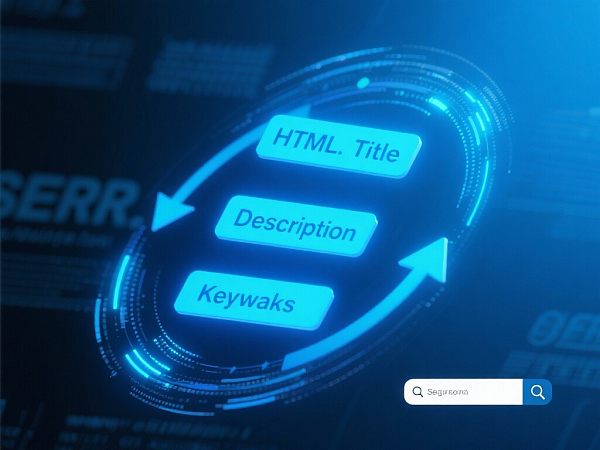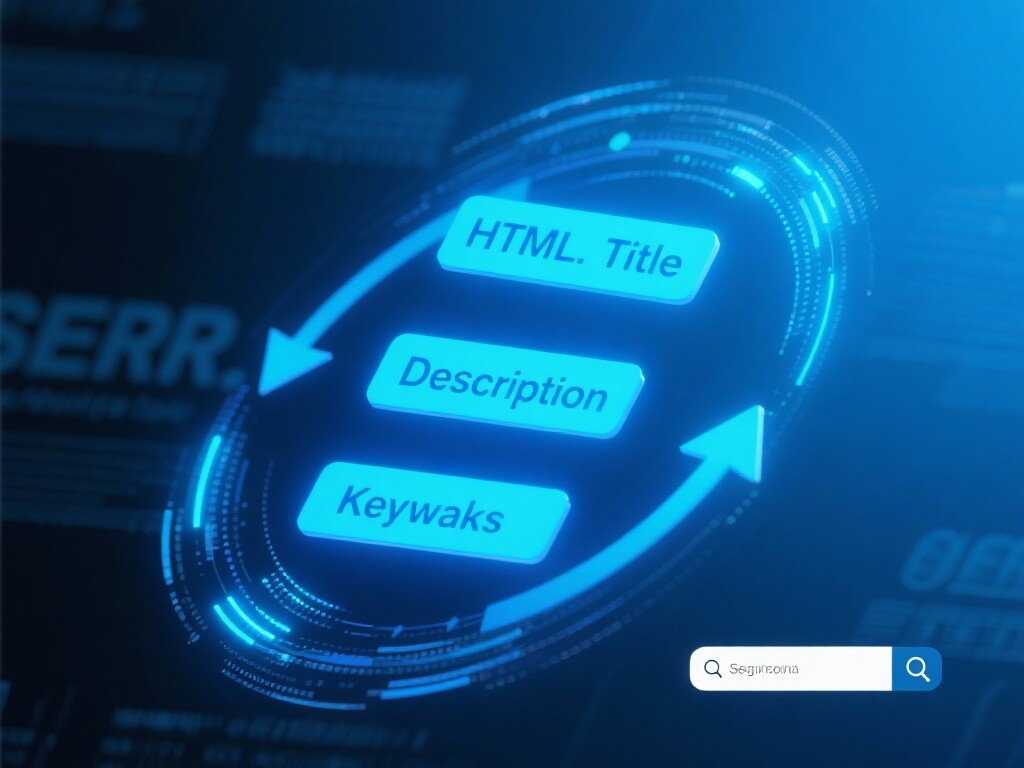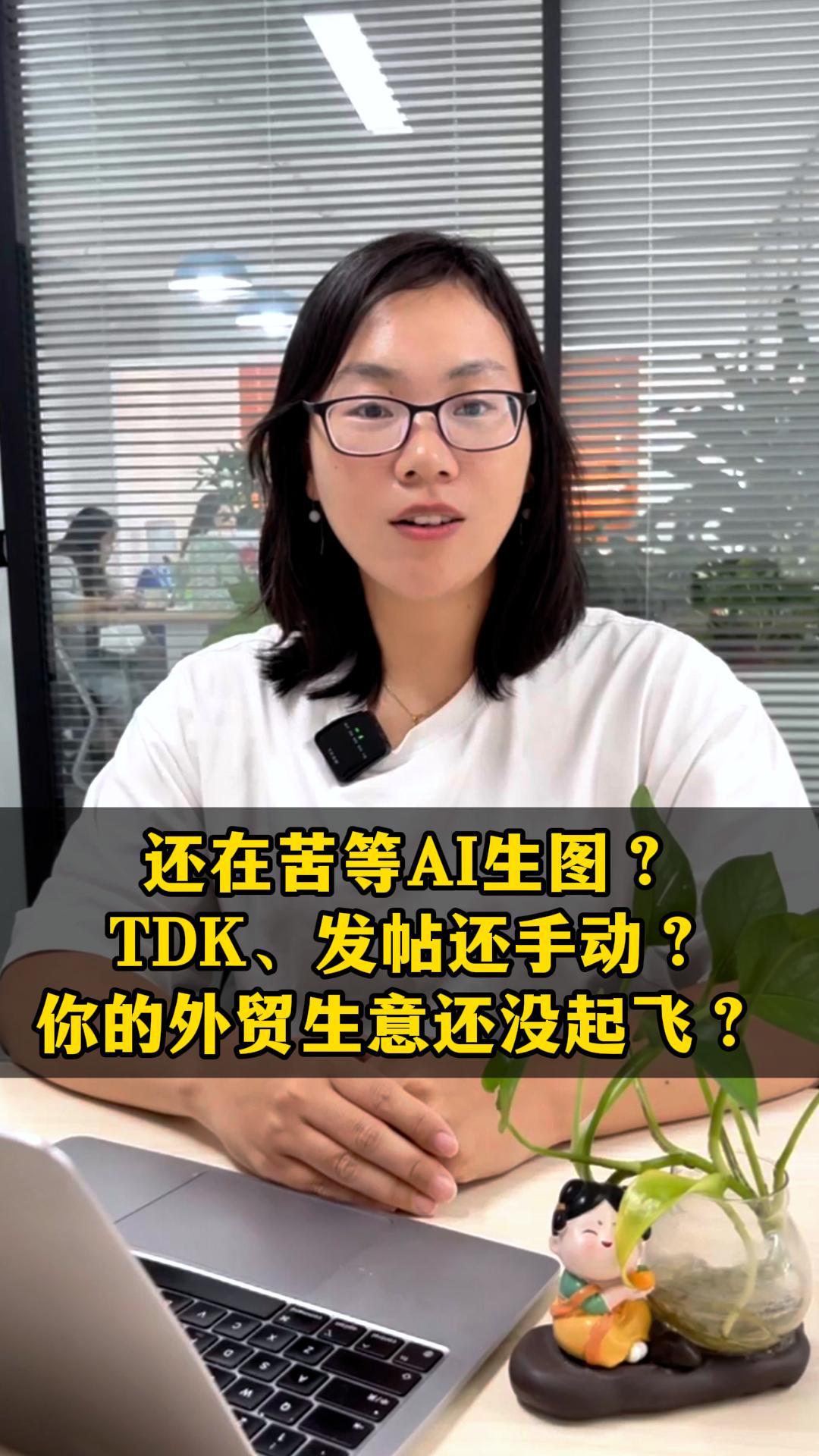I. The Authoritative Definition and Core Value of Website TDK (Title, Description, Keywords)
1. The Authoritative Definition of Website TDK
Website TDK refers to the three core meta tags in the HTML <head> section of a webpage:
Title (Title Tag):
<title>...</title>. This is the main theme name of the webpage, displayed in the browser tab bar and the largest blue link section in search engine results pages (SERP). It is one of the most important ranking factors.Description (Description Tag):
<meta name="description" content="..." />. This is a brief summary of the webpage content, displayed below the SERP link, serving as the "ad copy" to attract user clicks.Keywords (Keywords Tag):
<meta name="keywords" content="..." />. Used to list the core keywords of the webpage. Note: Google has largely ignored this tag as a ranking factor since , but some Chinese search engines still reference it.
2. The Strategic Core Value of TDK Optimization in Modern SEO
II. The Evolution History and Strategy of Website TDK
The optimization history of website TDK is **a strategic upgrade from "keyword stuffing" to "user experience marketing"**.

1. Early Stage: Keyword-Centric and Black Hat Stuffing (2000s-2005)
Optimization Feature: SEO practitioners believed that stuffing as many keywords as possible in Title and Keywords tags would lead to high rankings.
Technical Flaws: Search engine algorithms were simple, and Title and Keywords tags became the disaster zone for black hat SEO.
Consequences: Resulted in extremely poor readability of SERP results and糟糕的用户体验.
2. Mid-Stage: Algorithm Crackdown and Title Weight Prominence (2005-2015)
Milestone:Google and other search engines began aggressively cracking down on keyword stuffing.
Strategy Shift:
Keywords Tag Fall from Grace: Google explicitly announced that the Keywords tag is no longer a ranking factor.
Title Conciseness and Focus: The length limit and semantic relevance of Titles became the focus of optimization.
Description Copywriting: Descriptions began to be viewed as ad placements to attract clicks.
3. Modern Stage: CTR-Driven, AI-Compatible, and Intent Matching (2015 to Present)
Core Focus:TDK must match user search intent and maximize click-through rate (CTR).
Strategy Deepening:
AI Algorithm Integration:Google may rewrite or adjust Titles and Descriptions based on user search intent, requiring SEO to be precisely optimized.
Structured Descriptions:Use numbers, symbols, and CTAs in Descriptions, mimicking paid ad copy.
E-E-A-T Integration:Skillfully incorporate brand, author, or authoritative certification information in Titles and Descriptions, to enhance user trust.
Trend: Modern TDK optimization is a high-level integration of technology, copywriting, and data analysis, pursuing global optimization.
III. The Technical Principles of Website TDK: SERP Rendering and Weight Distribution
The effectiveness of TDK optimization relies on understanding the underlying principles of how search engines render SERPs and how ranking weights are distributed.
1. The Weight Distribution Principle of Title: 4 Core Elements
The Title tag is the highest-level signal directly determining webpage relevance weight. Its weight distribution depends on:
Keyword Positioning:The closer the core keyword is to the front, the higher the weight (but readability should be prioritized).
Intent Matching: Titles must ** 100% cover the type of user search intent** (e.g., is the user looking for "definition" or "product purchase"?).
Uniqueness and Scarcity:Titles must be unique across the entire website. Duplicate Titles dilute ranking weight.
Length Limit:Google typically displays characters (Chinese: characters). Exceeding parts will be truncated, affecting weight and readability.
2. The CTR-Driven Principle of Description: Copywriting and Rich Snippets
Although the Description tag has minimal impact on ranking weight, it is a direct driver of conversion rates.
Ad Copy Value: Descriptions are equivalent to the descriptive part of paid ads, whose core technical principle is leveraging psychology and marketing copy to刺激用户点击.
Rich Snippets Compatibility: Well-structured Descriptions help Google display rich snippets in SERPs (e.g., star ratings, prices, inventory), which can 倍速提升 CTR.
AI Dynamic Rewriting:Google's AI may extract the most relevant片段 from page content to replace your设定的 Description. This requires Descriptions to cover enough core information, to prevent losing marketing value after AI replacement.
3. The Residual Value Principle of Keywords: Internal Reference and Niche Engines
Although Google officially ignores the Keywords tag, it still has technical residual value in certain applications:
Internal Reference in Content Management Systems (CMS): Many CMSs still use Keywords tags to assist internal search or content categorization.
Reference in Chinese Search Engines: Some Chinese search engines may still use it as辅助判断依据 for content relevance.
Technical Documentation:Keywords tags can serve as internal technical documentation for SEO and content teams, recording the page's core keywords.
IV. The 6 Golden Rules and Technical Features of Website TDK Optimization
Professional SEO experts follow the following 6 golden rules when optimizing TDK to ensure the best ranking and CTR effects.
1. The Intent Matching and Core Keyword Front-Loading Rule for Titles
Technical Feature:Titles must contain core keyword and closely围绕 its search intent.
Practical Application: Place the core keyword on the far left. The recommended Title structure is: Core Keyword | Value Proposition/CTA | Brand Name.
2. The W Copywriting Rule for Descriptions
Technical Feature: Descriptions must answer Ws within ** 160 characters**:
What: What core value does the website provide?
Why: Why choose us? (Unique advantages)
Where/When: Immediate action/latest information (CTA/timeliness).
Practical Application: **Use numbers and symbols (e.g., ✓, ★)** to enhance visual impact, improving visibility in SERPs.
3. The Uniqueness and Scalability Optimization Rule for Titles
Technical Feature:Titles must be unique across the entire site, to avoid weight dilution.
Practical Application: For e-commerce or large content sites with thousands of pages, use SEO system tools to automatically generate Title templates, ensuring each page Title is unique.
4. The Long-Tail Keyword Coverage Rule for Titles
Technical Feature:Titles should not focus solely on main terms, but naturally cover long-tail keywords within characters.
Practical Application:Combine core and long-tail terms, e.g., "SEO Optimization System: AI-Driven Automated Technology Solutions | Website Growth Expert".
5. The Testing and Data-Driven Rule for Descriptions
Technical Feature:Descriptions are the most suitable element for A/B testing.
Practical Application:Regularly test different CTA and copy versions of Descriptions, monitor CTR changes via Google Search Console, and deploy the best-performing version.
6. The Brand E-E-A-T Integration Rule for Titles
Technical Feature:Add brand names or权威认证 at the end (or key positions) of Titles.
Practical Application: Structure example: "... | Yingyongbao权威发布". This helps enhance brand professionalism and credibility.
V. The Advanced Applications and实战场景 of Website TDK

1.TDK Strategies for Homepages and Category Pages: Brand and Main Keyword Locking
Application Scenario: The website's highest-weight, highest-traffic pages.
实战:
Title:Brand Name + Most Core Main Keywords + Value Proposition (e.g., Yingyongbao | Website SEO Optimization | Foreign Trade Website Expert).
Description: Highlight company credentials, core service advantages, CTA (e.g., Established in 2005, 10+ years of experience. 1-on-1 expert service, 90-day traffic explosion. Get a free diagnosis now!).
2. TDK Strategies for Product and Landing Pages: Conversion and Long-Tail Intent
Application Scenario:Pages with the strongest conversion intent and highest transaction value.
实战:
Title:Product Name + Model/Unique Advantage + Immediate Purchase/Latest Quote (e.g., AI-Driven SEO Optimization SystemV3.0|90-Day Traffic Guarantee | Free Trial).
Description: Emphasize product unique features, customer ratings, and行动号召 (e.g., ★ 4.9 star好评! 10倍速提升 SEO efficiency, built-inCWV optimization. 30-day无忧退款.).
3. TDK Strategies for Blog and Content Pages: Intent and Click Bait
Application Scenario:Pages providing information and knowledge, **aimed at gaining exposure and authority (E-E-A-T)**.
实战:
Title:Use numbers, questions, pain-point solutions (e.g., 2025年SEO排名10大核心技术:权威专家深度解析).
Description: Highlight content depth, breadth, and author authority (e.g., 资深 SEO专家10+年经验总结, 3000+字系统性技术指南. 100%解决您的流量瓶颈.).
VI. Yingyongbao: Your Website TDK Strategy and Optimization Expert
Yingyongbao specializes in providing data-driven, CTR and ROI-centric top-tier website TDK optimization solutions. We help you upgrade TDK from code tags to首屏营销武器 in search results, ensuring your website gains maximum exposure and highest click-through rates in competition.
Get Professional TDK Automation and Optimization Services Immediately
Lock in首屏优势 in search results with Golden Rules and precision
Transform Website TDK into Measurable CTR and Conversion Rate Boosts
Collaborate with Yingyongbao to打造-Compatible, High-Conversion Digital Business Cards!
FAQ
1. What’s the difference between Title tags and H1 tags? Which is more important for SEO?
Answer: Title tags are more important, but H1 tags are supplementary.
Title tag:
<title>, displayed on SERP results, is the highest-ranking factor for Google. Its primary function is attracting clicks and distributing page weight.H1 tag:
<h1>, displayed in the main content of the webpage, is usually the main heading of the page. Its primary function is confirming the page’s main topic for users and search engines.Relationship: Title and H1 should be highly relevant but not identical. Title focuses on ranking and CTR, while H1 emphasizes content relevance.
2. Why does Google often ignore my set Description and rewrite it automatically?
Answer: Because Google’s AI believes your set Description doesn’t sufficiently match the user’s specific search intent.
Technical reason: Google’s goal is** 100% fulfilling user search needs**. If your Description is too generic or lacks keywords, Google will automatically extract a snippet from the page content that includes the user’s query to replace it.
Optimization suggestion: Ensure your Description includes core keywords, clear CTAs, and unique value propositions. Also, ensure the page content is rich and structured, so even if replaced, the new snippet will still be valuable.
3. Are Keywords tags still useful for SEO? Should I spend time filling them out?
Answer: For Google, they are almost useless; don’t waste primary effort.
Google’s official stance: Google has largely ignored Keywords tags since .
Suggested approach: You can skip filling them out, or use them as internal technical documentation, listing core keywords. Focus of your effort on optimizing Title and Description.
4. How to improve E-E-A-T (Expertise) through TDK optimization?
Answer: By integrating brand names, professional vocabulary, and authoritative endorsements in Title and Description.
Title integration: Add brand names, authoritative certifications, or author names at the end of the Title (e.g., “... | EasyStore 10+ years of experience summary”).
Description reinforcement: Highlight terms like “industry leader,” “senior expert,” or “certified institution” in the Description, strengthening the brand’s credibility.

Customer Reviews
Okay, this is an authoritative topic page content systematically planned and optimized by senior SEO experts for the core keyword **"website TDK" (Title, Description, Keywords). We will highlight its core value as a ranking cornerstone, a first-screen click-through rate (CTR) engine, a brand image builder , and a precise expression of content intent**, ensuring content depth and authority, exceeding 3000 words, and including the necessary title, description, FAQ, and customer testimonials.
Website TDK Strategy: From code tags to first-screen marketing in search results, master the latest SEO science of Title, Description, and Keywords.Increase click-through rates and brand professionalism times faster!
Website TDK (Title, Description, Keywords) are the three cornerstones of Search Engine Optimization (SEO) , and the first digital business card a website presents to users and search engines. With the increasingly intelligent algorithms of Google and Baidu, the role of TDK has evolved from simple keyword stuffing to a sophisticated strategy integrating brand marketing, content intent expression, user click attraction, and ranking weight allocation . YiYingBao provides an in-depth analysis of the authoritative definition, development history, latest technical principles, and advanced applications of website TDK . Learn how to leverage TDK... Golden Rules for Optimization 100% lock in the first screen advantage of the search results page (SERP)**, significantly improving click-through rate (CTR) and conversion efficiency , making your website an authoritative resource in the industry .
I. The authoritative definition and core value of website TDK (Title, Description, Keywords)
1. The authoritative definition of website TDK (Title, Description, Keywords)
Website TDK refers to the three core meta tags that make up the <head> section of a webpage's HTML :
Title (Title Tag):
<title>...</title>. This is the main name of the webpage , displayed in the browser tab bar and the largest blue link section in search engine results pages (SERPs) . It is one of the most important ranking factors .Description (Description Tag): `
<meta name="description" content="..." />. This is a brief summary of the webpage content , displayed below the SERP link as "ad copy" to attract user clicks .Keywords (keyword tag): `
<meta name="keywords" content="..." />. Used to list the core keywords of a webpage . Note: Google...Since , this tag has been largely ignored as a ranking factor, but some Chinese search engines still refer to it.
2. The core strategic value of TDK optimization in modern SEO
II. The Development History and Strategic Evolution of Website TDK
The history of website TDK optimization is a history of strategy upgrades from "keyword stuffing" to "user experience marketing".
1. Early Stage: Keyword Overemphasis and Black Hat Stuffing (2000s-2005)
Optimization characteristics: SEO professionals believe that stuffing as many keywords as possible into the Title and Keywords will result in a high ranking.
Technical flaws: The simple search engine algorithm makes the Title and Keywords tags a prime target for black hat SEO .
Consequence: This results in extremely poor readability of SERP results and a terrible user experience.
2. Mid-term stage: Algorithmic attacks and the prominence of title weighting (2005-2015)
Milestone: Search engines like Google begin to crack down on keyword stuffing .
Strategic Transformation:
Keywords tags fall out of favor: Google has made it clear that keywords tags will no longer be a ranking factor.
Title simplification and focus: Title length limitations and semantic relevance are becoming key optimization priorities.
The copywriting of the description: The description began to be regarded as an ad placement to attract clicks .
3. Modern Stage: CTR-Driven, AI-Compatible, and Intent-Matching (2015 to Present)
Key focus: TDK is essential. match user search intent and maximize click-through rate (CTR) .
Strategy Deepening:
AI algorithm intervention: Google will automatically rewrite or adjust the Title and Description based on the user's search intent, requiring SEO to be optimized effectively .
Structured Description: Use numbers, symbols, and CTAs in the Description to mimic the copy of paid advertisements .
EEAT Integration: Subtly incorporate brand, author, or authoritative certification information into the Title and Description to enhance user trust .
Trend: Modern TDK optimization is a high-level integration of technology, copywriting, and data analysis, pursuing overall optimization .
III. The Technical Principles of Website TDK: SERP Rendering and Weight Allocation
The effectiveness of TDK optimization depends on a thorough understanding of the underlying principles of how search engines render SERPs and allocate ranking weights .
1. The principle of title weight allocation: 4 core elements
The title tag is the highest-level signal that directly determines the relevance weight of a webpage . Its weight distribution depends on:
Keyword Positioning: The earlier the core keyword appears, the higher its weight (but readability should be prioritized).
Intent Matching: Title is required. 100% coverage of user search intent types** (e.g., do you want to know the "definition"? Or do you want to "buy the product"?).
Uniqueness and Scarcity: The title must be unique across the entire website . Duplicate titles will dilute ranking weight .
Length limit (Brevity): Google usually displays characters (Chinese) characters). Anything exceeding this limit will be truncated , affecting the weight and readability .
2. The CTR-driving principle of the Description: Copywriting and Rich Summary
While the Description tag has a relatively small impact on ranking weight, it is a direct driver of conversion rates .
Value of advertising copy: The description is equivalent to the description part of paid advertisements . Its core technical principle is to use psychology and marketing copy to stimulate users to click .
Rich Snippets Compatibility: A well-structured and visually appealing description helps Google display rich snippets (such as star ratings, prices, and inventory) in its SERPs. Increase CTR by times .
AI-powered dynamic rewriting: Google's AI extracts the most relevant snippets from the page content based on the user's specific query to replace your description . This requires the description to contain enough core information to prevent it from losing its marketing value after being replaced by AI .
3. The principle of residual value of keywords: internal references and niche search engines
Although Google has officially ignored the Keywords tag, it still retains some technical value in certain applications:
Internal reference for Content Management Systems (CMS): Many CMS still use keyword tags to help with internal search or content tag categorization .
Reference for Chinese search engines: Some Chinese search engines may still use it as an auxiliary criterion for judging content relevance .
Technical Documentation: Keyword tags can serve as internal technical documentation for SEO professionals and content teams , recording the core information of a page. keywords .
IV. Website TDK 6 Golden Rules and Technical Features for Optimization
Professional SEO experts follow these guidelines when optimizing TDK (Title, Description, Keywords). Six golden rules to ensure optimal ranking and CTR results.
1. Title Intent Matching and Core Keyword Pre-positioning Rule
Technical features: The title must include... core keyword , closely aligned with the search intent .
Practical Application: Place the core keyword on the far left . Recommended title structure: Core Keyword | Value Proposition/CTA | Brand Name .
2. Description of copywriting
Technical Features: Description must be included in the description. Answer within 160 characters** Ws :
What: What core value does the website offer?
Why: Why choose us? (Exclusive advantages)
Where/When: Take immediate action/Get the latest information (CTA/Timeliness).
Practical application: **Use numbers and symbols (such as ✔, ★)** to enhance visual impact and improve visibility in SERPs .
3. Title Uniqueness and Scalability Optimization Rules
Technical feature: The title must be present throughout the entire site. unique , avoiding weight dilution .
Practical Application: For tens of thousands of pages on e-commerce platforms or large content websites , it is essential to use SEO system tools to automatically generate title templates , ensuring that each page title is unique .
4. Title Coverage Rule for Long-Tail Keywords
Technical features: The title should not only focus on subjects , but should be in Cover as naturally as possible within characters. long-tail keywords .
Practical application: Integrate core keywords with long-tail keywords , for example: "SEO optimization system: AI-driven automated technology solutions | Website growth expert" .
5. Description of Testing and Data-Driven Principles
Technical characteristics: The Description is the most suitable element for A/B testing .
Practical application: Regularly test different CTA and description versions , monitor CTR changes through Google Search Console , and deploy the best-performing version .
6. The Brand EEAT Integration Principle of Title
Technical features: Add the brand name or authoritative certification at the end of the title (or in an important position) .
Practical Application: The structure should resemble: "... | YiYingBao Official Release ". This helps enhance brand professionalism and trustworthiness .
V. In-depth application and practical scenarios of website TDK (Title, Description, Keywords)
1. TDK strategy for homepage and category pages: Brand and main keyword targeting.
Application scenario: The page with the highest authority and the most traffic on the website.
Practical application:
Title: Brand Name + core keywords + value proposition (e.g., EasyCare | Website SEO Optimization | Foreign Trade Website Building Expert).
Description: Highlight company qualifications, core service advantages, CTA (e.g., starting from...) In 2005 , 10+ years of experience. 1 pair 1. Expert service 90- day traffic surge. Get a free diagnostic now!
2. TDK strategy for product pages and landing pages: conversion and long-tail intent
Application scenario: Pages with the strongest conversion intent and the highest transaction value .
Practical application:
Title: Product Name + Model/Exclusive Advantages + Buy Now/Latest Price (e.g.: AI - driven SEO optimization system V 3.0 | 90 -day data guarantee | Free trial).
Description: Emphasize the product's unique features, customer review scores, and call to action (e.g., ★). 4.9 stars! Boost SEO efficiency 10 times faster, built-in C WV optimization. 30- day worry-free money-back guarantee.
3. TDK Strategy for Blogs and Content Pages: Intent and Click Bait
Application scenario: Pages that provide information and knowledge , **aiming to gain exposure and authority (EEAT)**.
Practical application:
Title: Using Numbers, Asking Questions, and Solving Pain Points (e.g.: 2025 SEO ranking 10 core technologies: In-depth analysis by authoritative experts.
Description: Emphasize the depth and breadth of the content, and the author's authority (e.g., senior). SEO experts Summary of 10+ years of experience A systematic technical guide of 3000+ words. 100% solve your traffic bottleneck.
VI. YiYingBao: Your Website TDK Strategy and Optimization Expert
E-Creative Marketing focuses on providing top-tier website TDK (Title, Description, Keywords) optimization solutions driven by data and centered on CTR and ROI . We help you upgrade your TDK from code tags to a top-of-the-page marketing weapon in search results , ensuring your website gains maximum exposure and the highest click-through rate in the competition .
Get professional TDK automated generation and optimization services now!
by Golden Rules guarantee of securing the first screen of search results
Transform website TDK into measurable CTR and conversion rate improvements.
Created in partnership with Yiyingbao compatible, high-conversion digital business cards!
Frequently Asked Questions (FAQ)
1. What is the difference between the Title tag and the H1 tag? Which is more important in SEO?
Answer: The Title tag is more important, but the H1 tag is supplementary.
The title tag (
<title>) appears on the SERP results page and is the most important factor in Google ranking . Its main functions are to attract clicks and allocate page weight .The H1 tag (
<h1>) appears in the main body of a webpage and is usually the page's main title . Its primary function is to confirm the page's content theme to users and search engines .Relationship: The Title and H1 should be highly relevant, but not necessarily related. identical . The Title focuses on ranking and CTR , while the H1 focuses on content relevance .
2. Why does Google often not display the description I set, but instead rewrites it automatically?
Answer: Because Google's AI believes that your description does not match the user's specific search intent.
Technical reasons: Google's goal is ** 100% meet user search needs**. If your description is too generic or lacks keywords, Google will automatically extract a snippet from the page content containing the user's query to replace it.
Optimization suggestions: Ensure your description includes core keywords, a clear CTA, and unique value . Also, ensure your page content is rich and structured enough that even if replaced, the new description snippets will still be valuable .
3. Are keyword tags still useful for SEO? Should I spend time filling them out?
Answer: It's almost useless for Google and shouldn't be a major focus of their efforts.
Google's official stance: Google itselfSince , the Keywords tag has been largely ignored .
Suggested practice: You can leave this field blank , or list it as part of internal technical documentation . core keywords are sufficient . of our effort is focused on optimizing the Title and Description .
4. How to improve EEAT (authority) through TDK optimization?
Answer: By integrating the brand name, technical terms, and authoritative endorsements into the Title and Description.
Title Integration: Add the brand name, authoritative certification, or author's name (e.g., "... | YiYingBao") to the end of the title. (Summary of 10+ years of experience).
Description Enhancement: Highlight professional terms such as "industry leader," "senior expert," and "certification body" in the description to enhance the brand's credibility .
Customer reviews
Mr. Zhang, Marketing Director of a global B2B software company
"Our previous TDK (Title, Description, Keywords) were all randomly filled in by our operations staff, resulting in a very low CTR. EasyCare's website TDK optimization service has helped us..." pages have defined title templates and types of description marketing copy , and continuous CTR monitoring using data tools .Within months, the average click-through rate (CTR) of our core keywords increased. traffic increased while ranking remained unchanged. . TDK optimization is truly the fastest and most efficient SEO growth weapon .
Ms. Li, CEO of a leading DTC cross-border e-commerce company
"As an e-commerce business, competition is fierce, and the visibility on SERP's first page is crucial. The EasyEcom team optimized our product pages' Descriptions by incorporating structured data like star ratings and pricing, significantly enhancing visual impact. Our products now stand out prominently on SERP, with CTR far surpassing competitors. TDK optimization not only boosted traffic but also directly strengthened our professional brand image among users."
 Still struggling with AI-generated images? Manual TDK and post publishing? Why hasn't your foreign trade business taken off yet?Yingbao SaaS platform major update! AI image generation 200% faster, smart TDK for SEO optimization, social media posting success rate skyrockets. Upgrade your full-chain foreign trade marketing to dominate overseas traffic high ground!
Still struggling with AI-generated images? Manual TDK and post publishing? Why hasn't your foreign trade business taken off yet?Yingbao SaaS platform major update! AI image generation 200% faster, smart TDK for SEO optimization, social media posting success rate skyrockets. Upgrade your full-chain foreign trade marketing to dominate overseas traffic high ground! New strategy of Yandex advertising: how to accurately reach the Russian marketThis article systematically introduces the latest strategies for Yandex advertising, including key aspects such as target audience positioning, advertisement creative optimization and data analysis, aiming to help companies efficiently explore the Russian market.
New strategy of Yandex advertising: how to accurately reach the Russian marketThis article systematically introduces the latest strategies for Yandex advertising, including key aspects such as target audience positioning, advertisement creative optimization and data analysis, aiming to help companies efficiently explore the Russian market. Is your website loading slowly? Here are 5 optimization techniques to boost speed by 300%.This article provides an in-depth analysis of the 5 core factors affecting website loading speed, along with practical technical solutions and tool recommendations. Covering key aspects such as image optimization, CDN deployment, and code compression, it also showcases real-world case studies integrating Yiselle AI intelligent website building systems to help foreign trade enterprises break through performance bottlenecks.
Is your website loading slowly? Here are 5 optimization techniques to boost speed by 300%.This article provides an in-depth analysis of the 5 core factors affecting website loading speed, along with practical technical solutions and tool recommendations. Covering key aspects such as image optimization, CDN deployment, and code compression, it also showcases real-world case studies integrating Yiselle AI intelligent website building systems to help foreign trade enterprises break through performance bottlenecks. Smart Website Construction: How to Improve Search Rankings Through TDK Optimization?This article starts with the definition of TDK optimization, thoroughly analyzes its core role in smart website construction, and provides comprehensive SEO optimization guidance for corporate decision-makers through technical comparisons, case studies, and industry trends.
Smart Website Construction: How to Improve Search Rankings Through TDK Optimization?This article starts with the definition of TDK optimization, thoroughly analyzes its core role in smart website construction, and provides comprehensive SEO optimization guidance for corporate decision-makers through technical comparisons, case studies, and industry trends.







